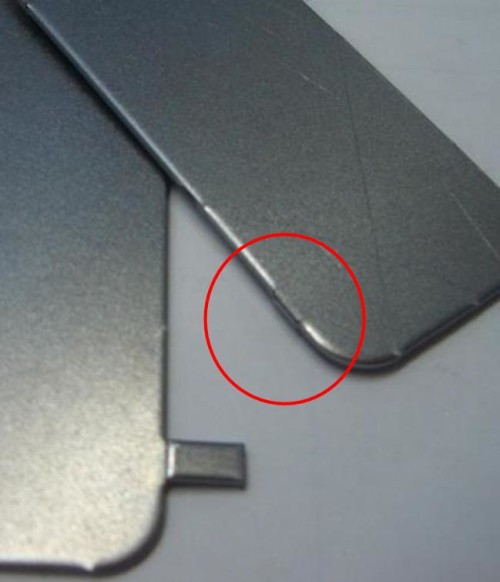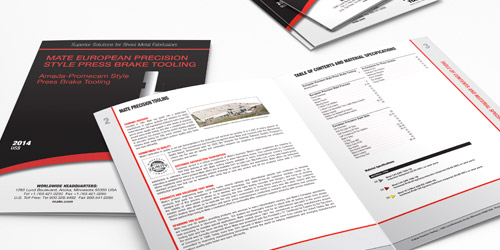Separating Parts from Material: Square ShearButton™
Solution Bulletin
The Problem:
Micro-joints (or “shake and break”) are a traditional method fabricators use to separate multiple parts from a sheet of material. The traditional micro-joint method places small, interconnecting tabs between parts by programming the spacing of the slitting punch to leave material unpunched.
However, micro-joints leave burrs on the edge, which, unless removed, could interfere with other downstream operations such as bending. These burrs may also cause serious injury if not removed. In thicker materials, the micro-joints are not always strong enough to hold the part while punching. If the size of the micro-joint is increased, it tends to leave an even larger burr on the part. So, what can you do if you punch thicker materials? 
The Mate Solution:
A Square ShearButton™ tool (right) is a part retention system for thicker materials. Available in both form up and form down, Square ShearButton allows fabricators to snap punched components out of sheet metal. It is quite similar to a round half shear, but square. A benefit of the form down is that once the tab is removed, the edge closely matches the quality of a punched edge.
Square ShearButton may be used with a variety of material types, including stainless steel, aluminum, cold roll steel and more. Depths and heights may be adjusted to suit the user’s application.
When to Use Square ShearButton:
- Nesting parts in a large sheet (photo above right).
- Very large or heavy parts with minimal micro-joints. These tabs are much stronger than the traditional micro-joint, so fewer are needed.
- Rounded part corners where a corner micro-joint is not possible

